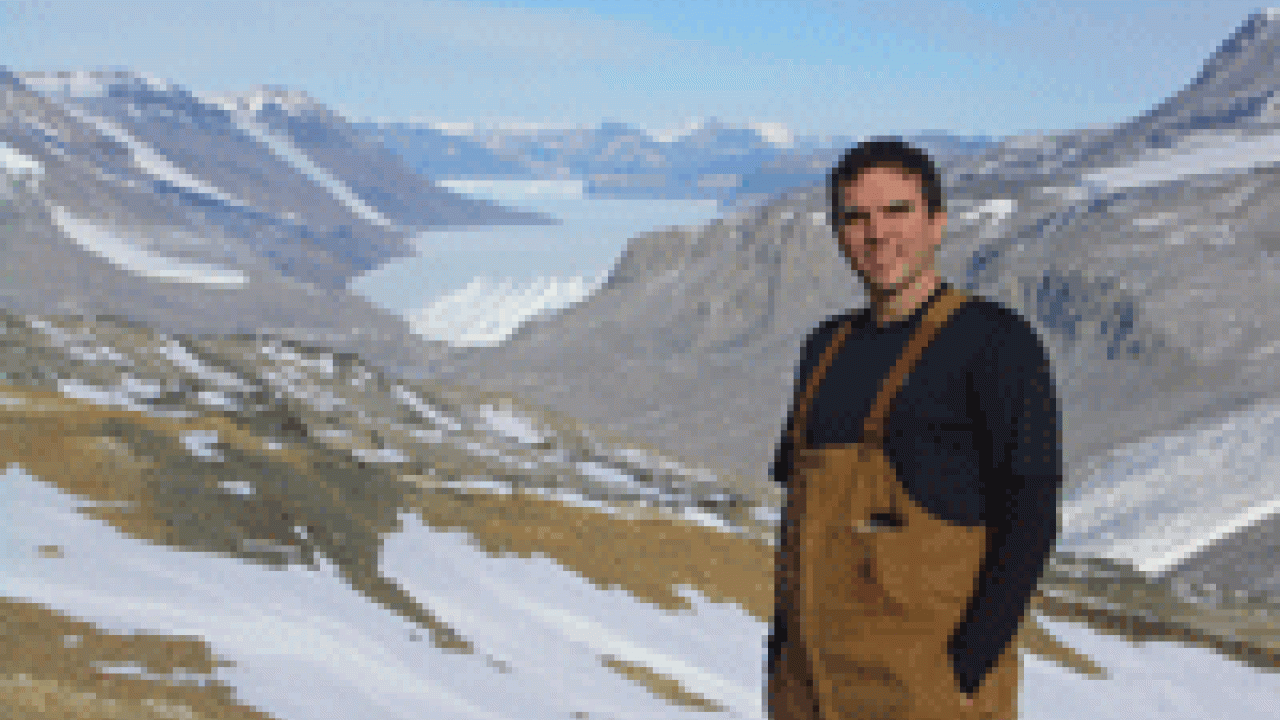Shortly after UC Davis geophysicist Gary Acton arrived at his study site in early October, he went for a short hike. Within five minutes, there was a layer of ice on the water in his bottle.
"Life in Antarctica can be stunningly beautiful one moment and frighteningly dangerous the next," he said, via e-mail from McMurdo Station on the edge of the Ross Ice Shelf.
Acton, an associate research scientist in the Department of Geology, and Luigi Jovane, a postdoctoral researcher working with Acton and Professor Ken Verosub, are in Antarctica working on the Antarctic Drilling in Southern McMurdo Sound project, or ANDRILL-SMS, with researchers from the U.S., New Zealand, Italy and Germany.
Temperatures in early October were around minus 4 Fahrenheit, but wind chill dropped that to 60 to 90 below zero. But by mid-November, temperatures at McMurdo had soared almost to freezing.
"We learn to live in these conditions in the 'Happy Camper' camp, where we camp out overnight with other newcomers. It was one of my most memorable and enjoyable times in Antarctica," Acton said.
"One of the surprising things you learn is that constant motion, like building with snow blocks or hiking, will keep you warm even in the most extreme cold as long as you continue to eat and drink often."
The dry air means that dehydration is a constant concern, and shocks of static electricity from touching metal or other people are a constant annoyance, he said.
The ANDRILL project is collecting sediment cores from the ocean beneath the Antarctic ice. The ocean sediments cast light on past climate change and geological activity.
"Antarctica is one of the primary drivers of the world's climate, so we need to understand what happened in Antarctica in the past," Verosub said.
The team drills through the 8-meter-thick sea ice, then lowers pipe 380 meters to the sea floor, to drill into the sedimentary rock below. In the past two months, the drillers have tunneled more than 1,100 meters into the rock.
The trip from McMurdo to the drill site is a two-hour drive over the frozen Ross Sea in a Mac Track truck, a pickup with four triangular tracks for wheels.
"On one side is Mt. Erebus, an active volcano with steam pouring out its top. On the other side, the Transantarctic Mountains loom with glaciers pouring out of each valley," Acton said.
The long core of sediment contains a record of what was happening in the ocean over the past 15 to 20 million years. By looking at the minerals, microscopic fossils and magnetic grains deposited in layers over those millions of years, the researchers can reconstruct a record of climate, sea ice and other changes.
Acton leads the chronostratigraphy team, which dates the layers of sediment by looking at their magnetic properties.
The Earth's magnetic field has flipped from north to south and back at random intervals of tens of thousands to millions of years. Magnetic grains in rocks that solidified millions of years ago still point to the magnetic north of the time. By matching changes in the magnetic signature of the sediment core to known sequences from other parts of the world, Acton can set dates for the layers in the core.
Magnetic grains can also provide information about past climate, Verosub said. Grains of exposed rock wash out to sea and settle in sediments. When the climate is cold, rocks are weathered mostly by freezing and thawing, leaving relatively large grains. When conditions are warmer, chemical weathering becomes more important, making grains smaller and changing their magnetic properties.
Samples from the core have been sent to Verosub's lab at UC Davis and labs in Rome, Italy and Otago, New Zealand, for magnetic analysis.
ANDRILL also has a large educational component. Science teachers from the participating countries took part as members of the research team, and also maintained blogs and communicated with school classrooms back home.
The ANDRILL team has now finished drilling for the year and will remove the drilling rig from the ice before it begins to melt in the Antarctic summer. Acton will be moving to College Station, Texas, and telecommuting to UC Davis while the ANDRILL teams work through the data.
"The most amazing aspect of Antarctica for me has been the sight of glaciers pouring down the valleys off the Antarctic ice sheet. The contrast of the white glaciers against the browns and blacks of the Transantarctic Mountains is unforgettable, perhaps even more so for a geophysicist studying climate change and tectonics," Acton said.
Verosub visited Antarctica in 1997, 1998 and 1999 as part of a previous drilling project at Cape Roberts. He describes the white continent as "absolutely beautiful."
"It's like no other place I've been," he said. "It's just awe-inspiring to be down there."
Media Resources
Clifton B. Parker, Dateline, (530) 752-1932, cparker@ucdavis.edu
